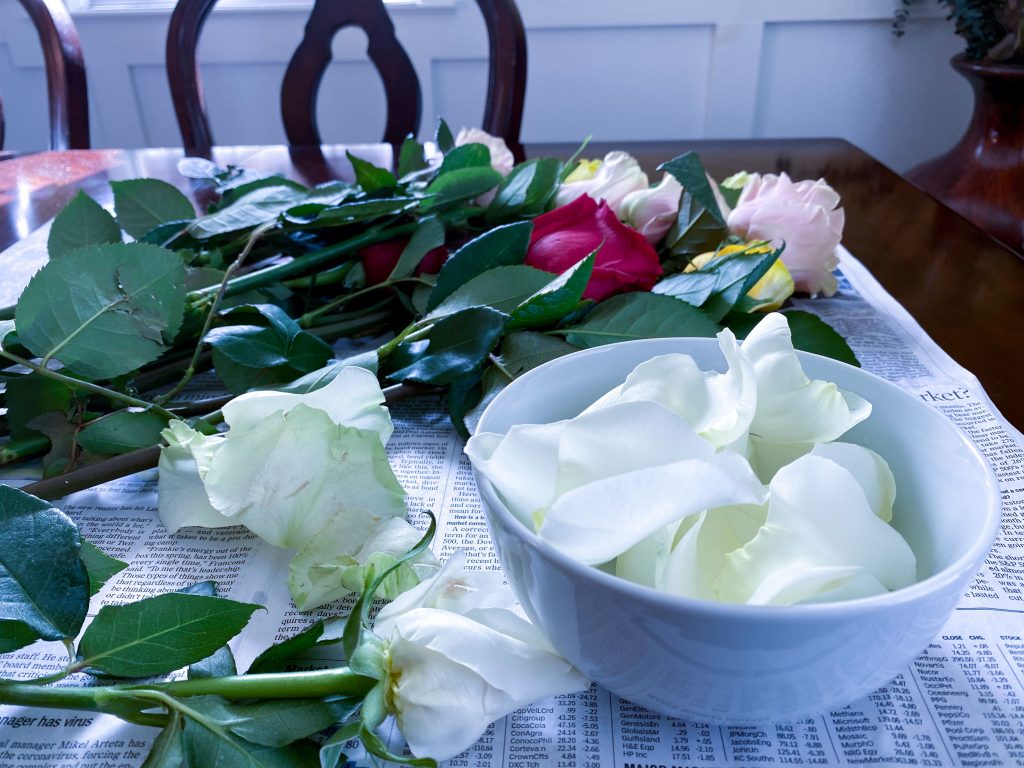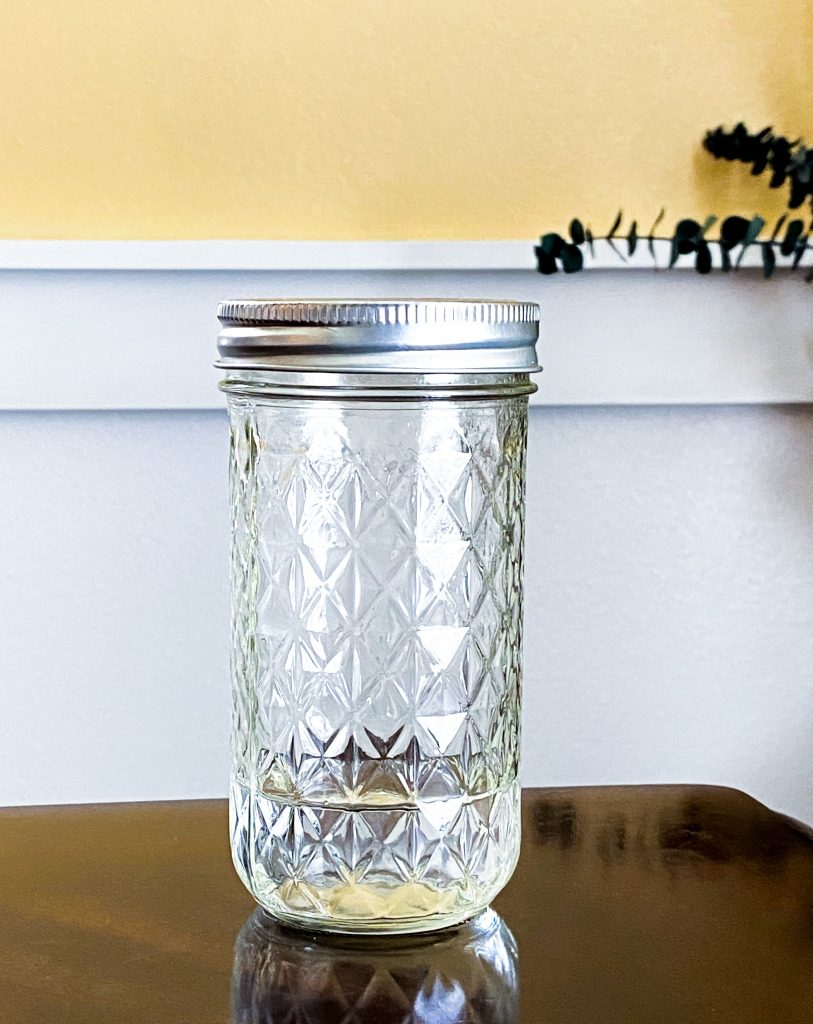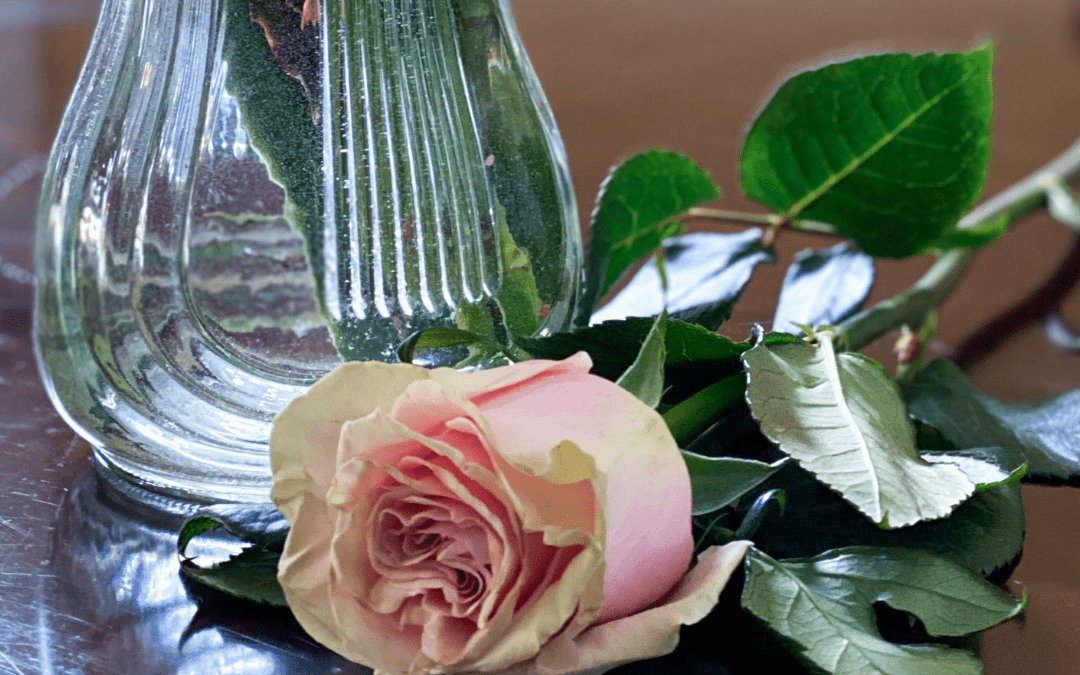I could go on and on about my love for rosewater! I used to spend a good bit of money buying already-made rosewater from the store before realizing I could make my own.
Being a self-proclaimed DIY Queen, I decided to take a stab at making this life-changing elixir, and I haven’t looked back since!
What makes rosewater so great, you ask?
First, it’s a hydrosol, which means it’s made from distilling fresh rose petals. Due to this distillation process, rosewater has properties similar to rose oil.
The main difference is that the rosewater’s essential oil is not as potent as in rose oil.

I use rosewater DAILY for almost everything! I use it on my skin to help keep it glowy and supple, I drink it in my tea in the mornings, and the list goes on!
Below are some of the benefits you can expect from rosewater:
– Soothes inflamed/irritated skin
– Has anti-aging properties
– Softens your hair
– Hydrates dry skin
– Helps with digestion
– Soothes a sore throat
– Decreases bloating
Are you convinced yet that you need to add rosewater to your daily routine!?
Check out my video below to learn how to make rosewater, or scroll down to see my step-by-step instructions!
***Be sure to do a patch test on your skin before adding the rosewater to your routine.
What You’ll Need
– Organic roses ( I used a dozen)
– Newspaper
– One large bowl
– Distilled water
– Ziploc bags
– Ice cubes
– Two small glass dishes
– One deep pot with a lid
– Mason jars
Preparation
First, gather everything that you’ll need.

Spread your roses on newspaper, peel the petals off one by one, and then place them in the large bowl.


After you’ve peeled off all the petals, run the bowl under cool water to rinse off any debris.

Distillation Process
Next, place your pot on the stove and flip your first glass dish inside the pot.
Then, add your second glass dish right on top of the first, right side up.

Evenly spread your rose petals along the pot’s base and up to the rim of the second glass dish. *Don’t worry if you can’t fit them all in the first go-around; you can add them later.*

Grab your distilled water and pour it into the pot to cover the rose petals. *You don’t need to submerge them.*

Turn your stove to low heat and let everything simmer with no lid for about 10 minutes.
After, place your inverted lid on the pot, fill your Ziploc bags with ice cubes, then add those right on top of your inverted lid.

Continue to let your rose petals simmer on medium heat until your ice melts, which should take 25-30 minutes.
Next, remove your melted ice and grab some oven mitts to carefully take the lid off your pot.

Your top glass dish should be filled with your first batch of rose water!
Using mitts, remove the top dish and transfer your rosewater to a mason jar for cooling.


Things To Note
***If you have any leftover rose petals, you can add them into the pot after the first batch, then add more distilled water if you need to cover the petals.
Then repeat the distillation process until your rose petals lose their color.
Depending on how many rose petals you used, you can expect to do 2-6 batches until your petals are transparent. Overall, I did around six batches.
***You can also drain the petals that are in the distilled water and use the rosewater.
It won’t have as many properties as the rosewater you collected in the glass dish, but it’s still usable.
I typically use the drained rosewater on my hair to help with softness.
Once your rosewater is completely cooled, you can store it in your refrigerator for up to a month. If it’s not in the fridge, its shelflife is about a week.
I can’t wait for you to make this magic elixir! Try adding it to your skincare routine and your body will thank you!
How do you use rosewater in your daily routine? Leave a comment down below!
Peace, love, and good vibrations!





